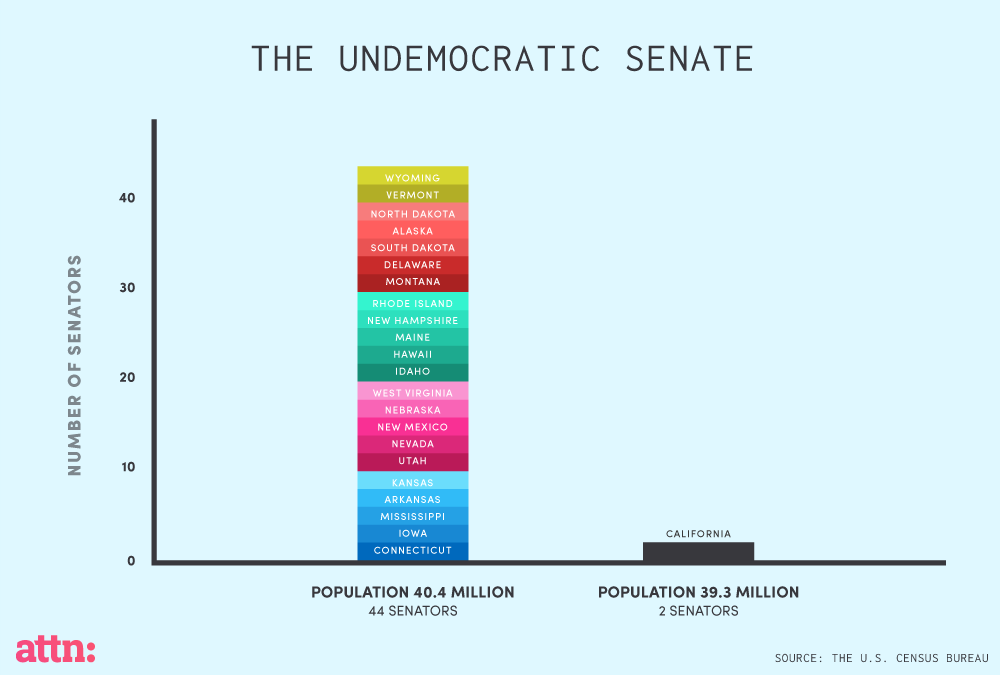This Chart Exposes the Undemocratic Senate

By:
Early Friday morning, the fate of a health care repeal bill that would have affected 1/6th of the economy and coverage for millions of Americans came down to one senator's vote.
Those razer-thin margins have become commonplace in today's Senate, which can increasingly be seen as a decidedly undemocratic chamber of Congress, if you consider the the disparate population sizes of the states senators represent.
Each state has two senators, no matter the actual number of people those senators are representing in federal policy decisions. To illustrate that disparity, check out this chart, an update of an earlier version originally created by data journalist Ezra Klein in 2013.

On the x-axis, you'll find the sum population of 22 of the smallest states (plus D.C., which does not have any senators): 40.4 million people. The bar on the right shows that California's population is roughly equivalent: 39.3 million
The y-axis shows the number of senators. Those 22 states have 44 senators total—almost half of the total Senate. But California, with it's enormous population, gets just two senators representing their views.
This disproportionate representation is by design, of course. The architects of the Constitution made a compromise, ceding to the demands of smaller states during the Constitutional Convention in 1787, even if that meant going against the fundamental premise of the equal representation that the framers envisioned.
James Madison wrote about the compromise in The Federalist No. 62:
"A government founded on principles more consonant to the wishes of the larger States, is not likely to be obtained from the smaller States. The only option, then, for the former, lies between the proposed government and a government still more objectionable. Under this alternative, the advice of prudence must be to embrace the lesser evil; and, instead of indulging a fruitless anticipation of the possible mischiefs which may ensue, to contemplate rather the advantageous consequences which may qualify the sacrifice."
More than 200 years later, the debate over this compromise is ongoing.
Hours before the Senate voted on a "skinny" repeal bill that would have gutted select parts of the Affordable Care Act, Wyoming Sen. Mike Enzi (R) took the floor and railed against the existing health care law, threatening that inaction on the bill before them would be unacceptable.
MSNBC's Chris Hayes observed that Enzi represents 585,000 constituents from Wyoming, which is the state with the smallest population in the U.S., with roughly 100,000 fewer people than D.C.—which has no senators.
For better or worse, it's unlikely to change any time soon.
The current system offers an advantage to smaller states that they would presumably fight to maintain, regardless of what that means for equitable representation in Congress. For the time being, it basically boils down to states with large populations exerting influence in the House, which assigns a certain fraction of its 435 representatives to each state based on its population, and states with small populations enjoying a major influence in the Senate.
